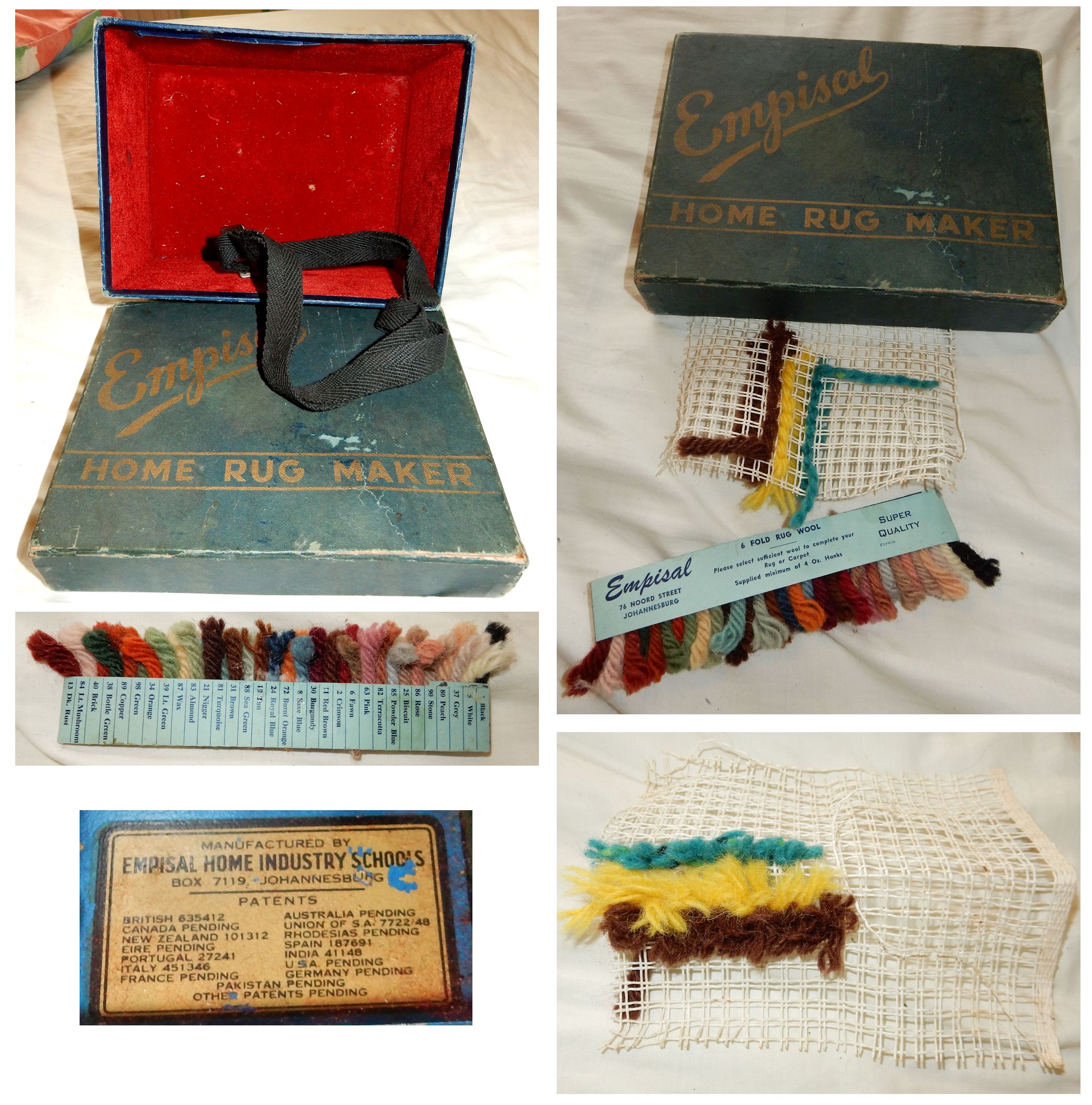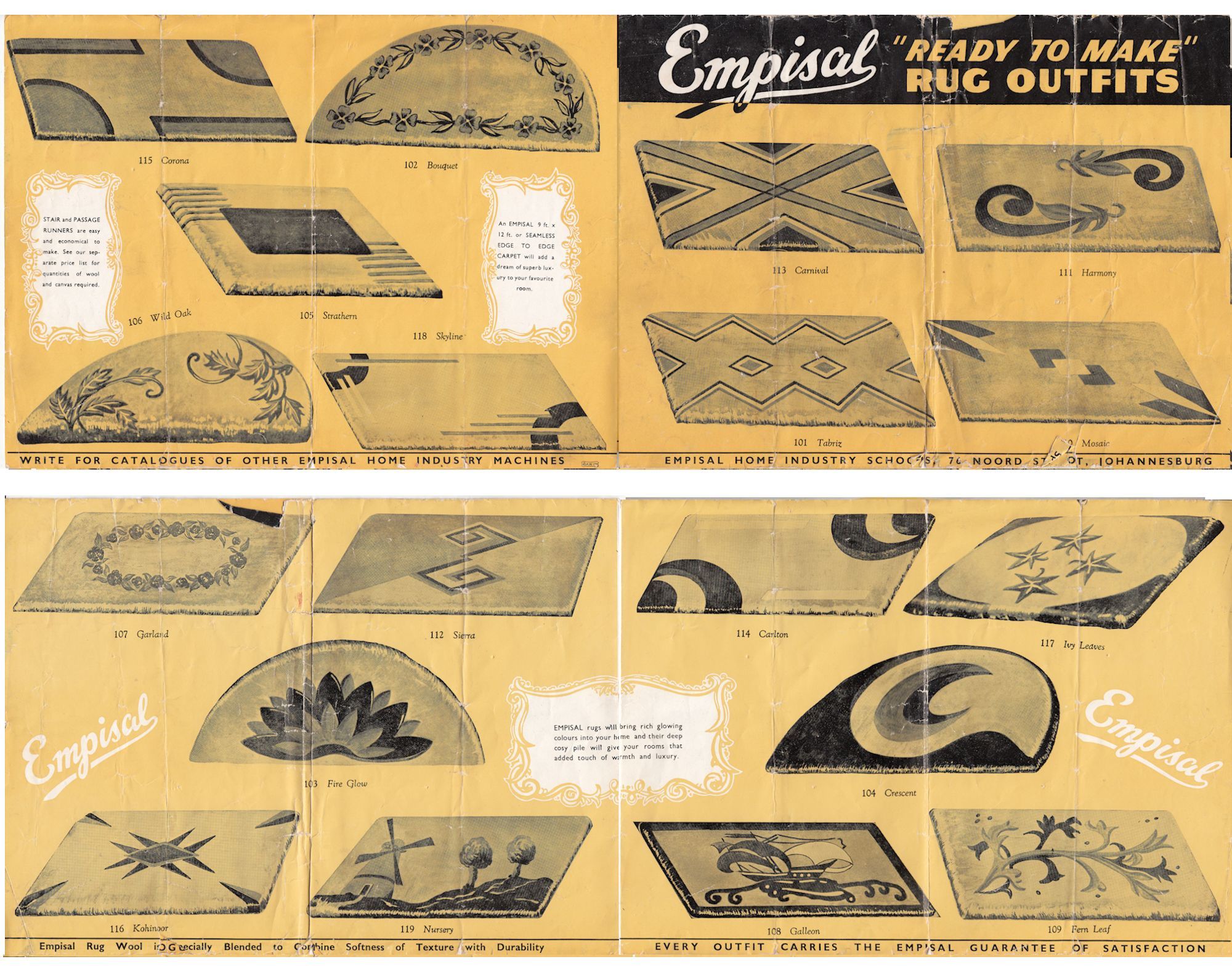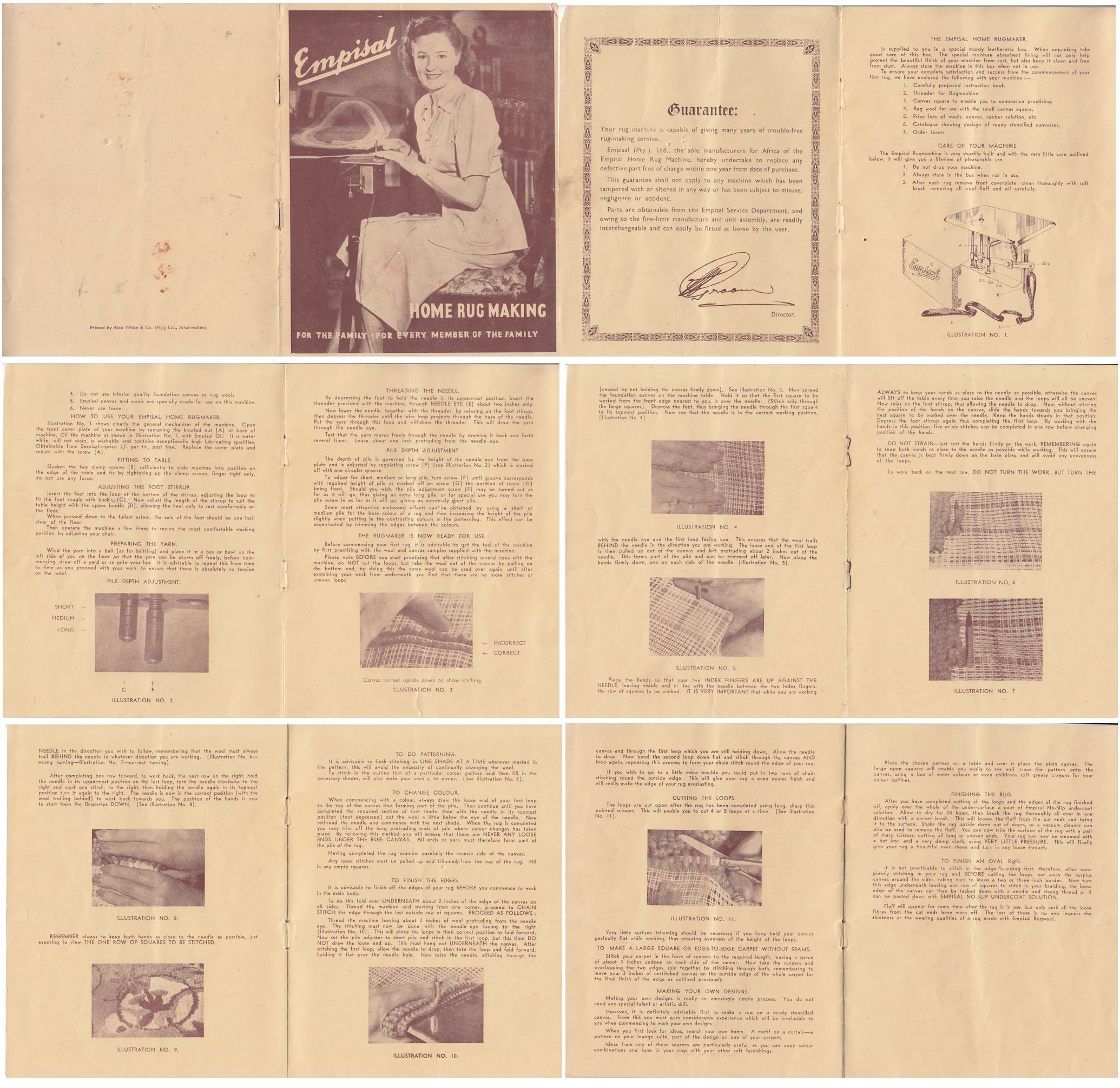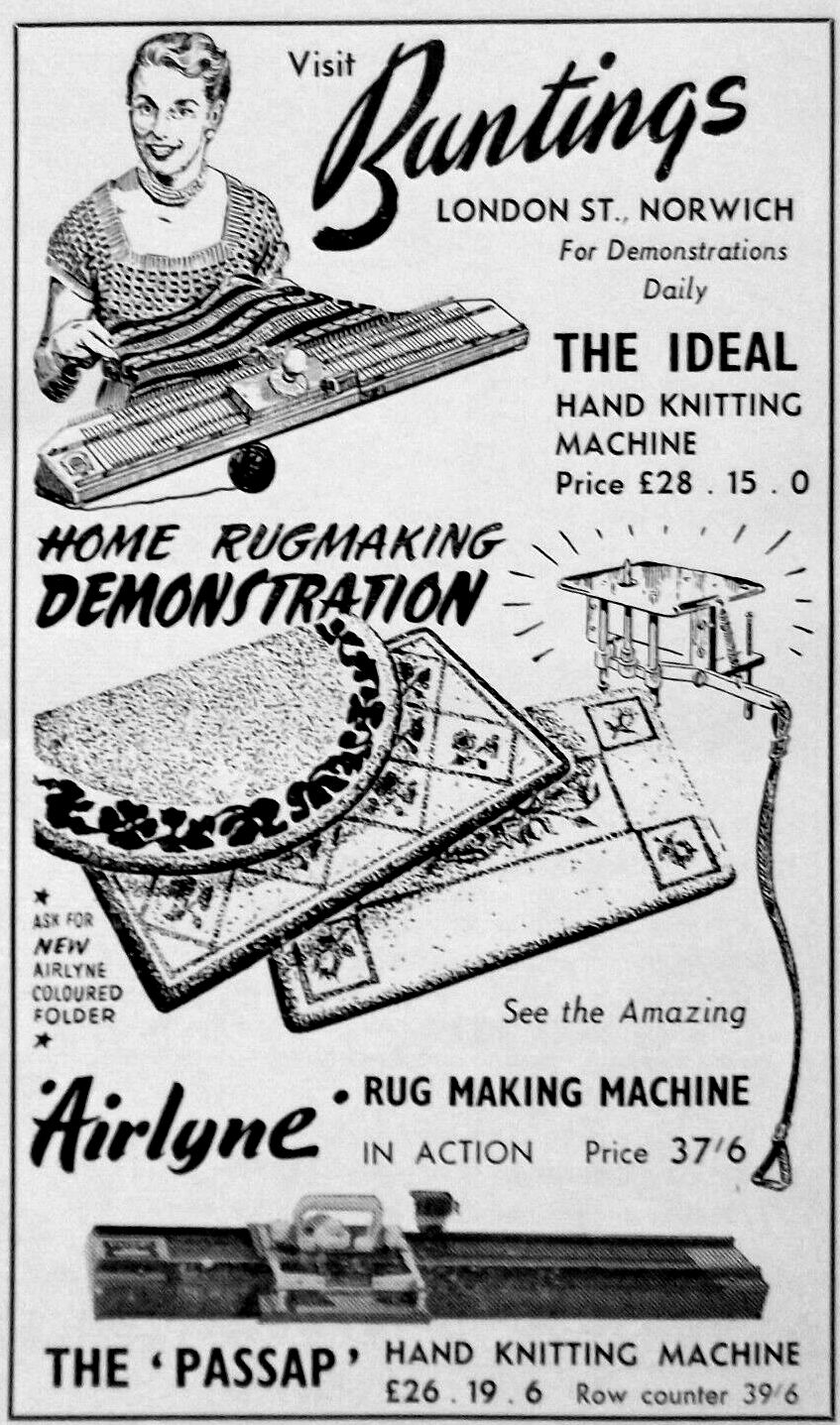
RUG-MAKING HISTORY - AIRLYNE - THE WORLD'S FASTEST HOME RUGMAKER
This isnít latch-hooking, but simply piqued my interest when I saw it.
The Airlyne Home Rugmaker was a foot operated inverted punch needle (i.e. punched upwards from below) that left both hands free to move the canvas. People were already used to treadle-operated sewing machines would have found it easy to adapt to this rug-making machine. Screws clamped the device onto the end of a table (no doubt many people put some cloth around the table edge to prevent scratches). A pivoting metal bar attached a webbed strap/stirrup to the central needle. Pressing down and then releasing the foot strap caused the central needle to push up and down through the opening on the plate and through the canvas. The depth of pile was altered using a small sprung screw to the left of the needle; this lengthened or shortened the action of the threaded needle. A threader was supplied; this being a wire that was pushed through the eye of the needle and down the length of the needleís shaft to pull up the wool. Airlyne's own Axminster weight wool was recommended, but the needle could also cope with thicker yarns. Once set up and threaded, the user simply kept up a rhythm on the foot strap and moved the canvas. The action of the needle made a series of loops. After a little practice, the user could space the loops evenly and follow stencilled patterns. The loops were either left intact (looped pile) or cut with sharp scissors to resemble a hooked rug.

Because the loops or tufts weren't knotted onto the canvas, an adhesive backing had to be applied to the reverse of the worked canvas to prevent the yarn from being pulled free. This was particularly important with cut-pile rugs. The advertising promoted the economical use of yarn - a cut pile rug made with the Airlyne used a quarter less yarn than a hooked method. This economy would have been offset by the additional cost of adhesive backing.
The canvas used was hessian or burlap. Airlyne's skeins of Axminster wools were intended for use with their home rug-maker machines, but could also be cut to length for rug hooking. Vintage Airlyne skeins are sometimes available from online auction sites.
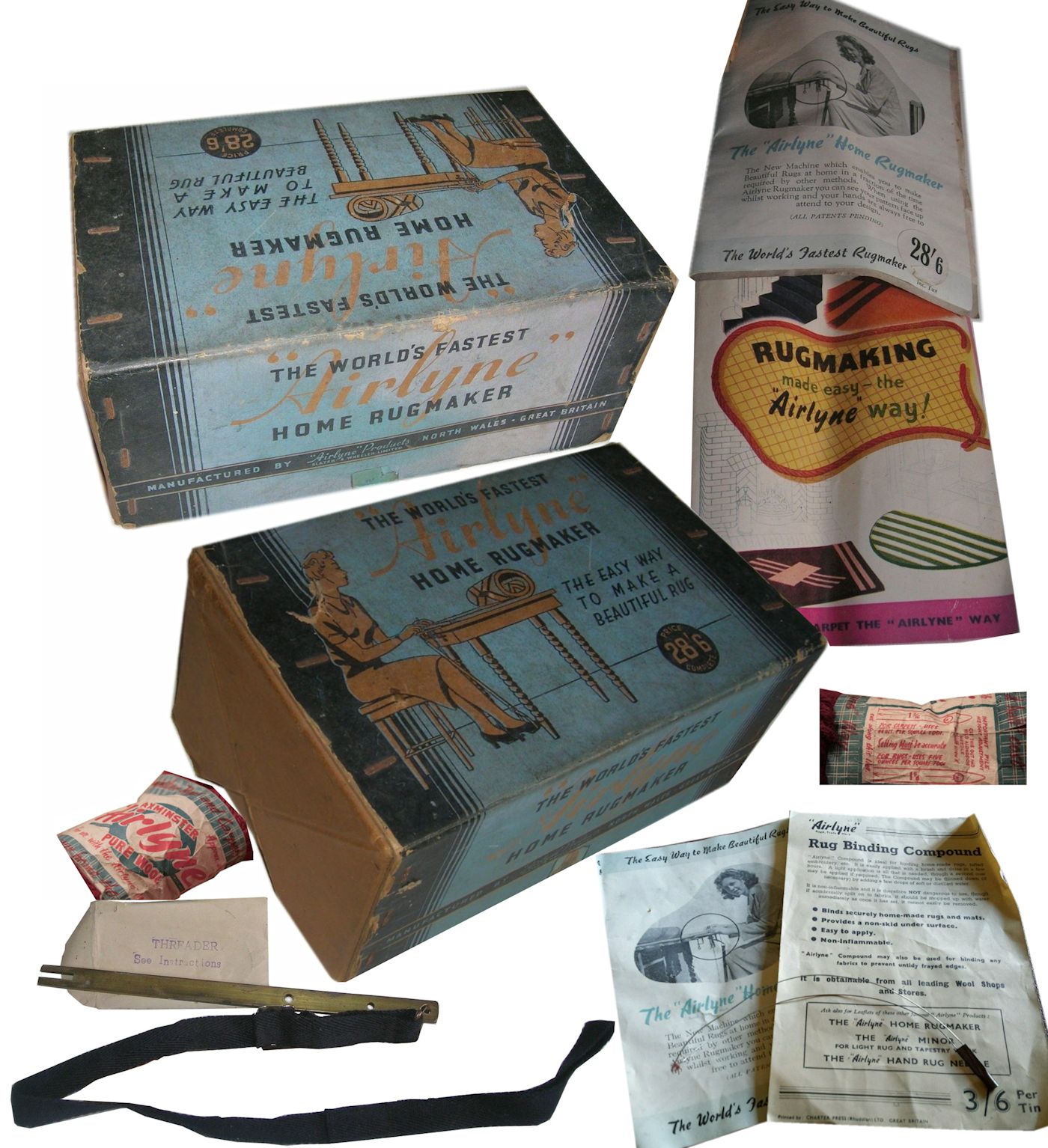
There was also a smaller, lightweight version - the Airlyne "Minor" Embroidering Machine - for use with lighter weight threads and canvases. It was operated in identical fashion to the Home Rugmaker.
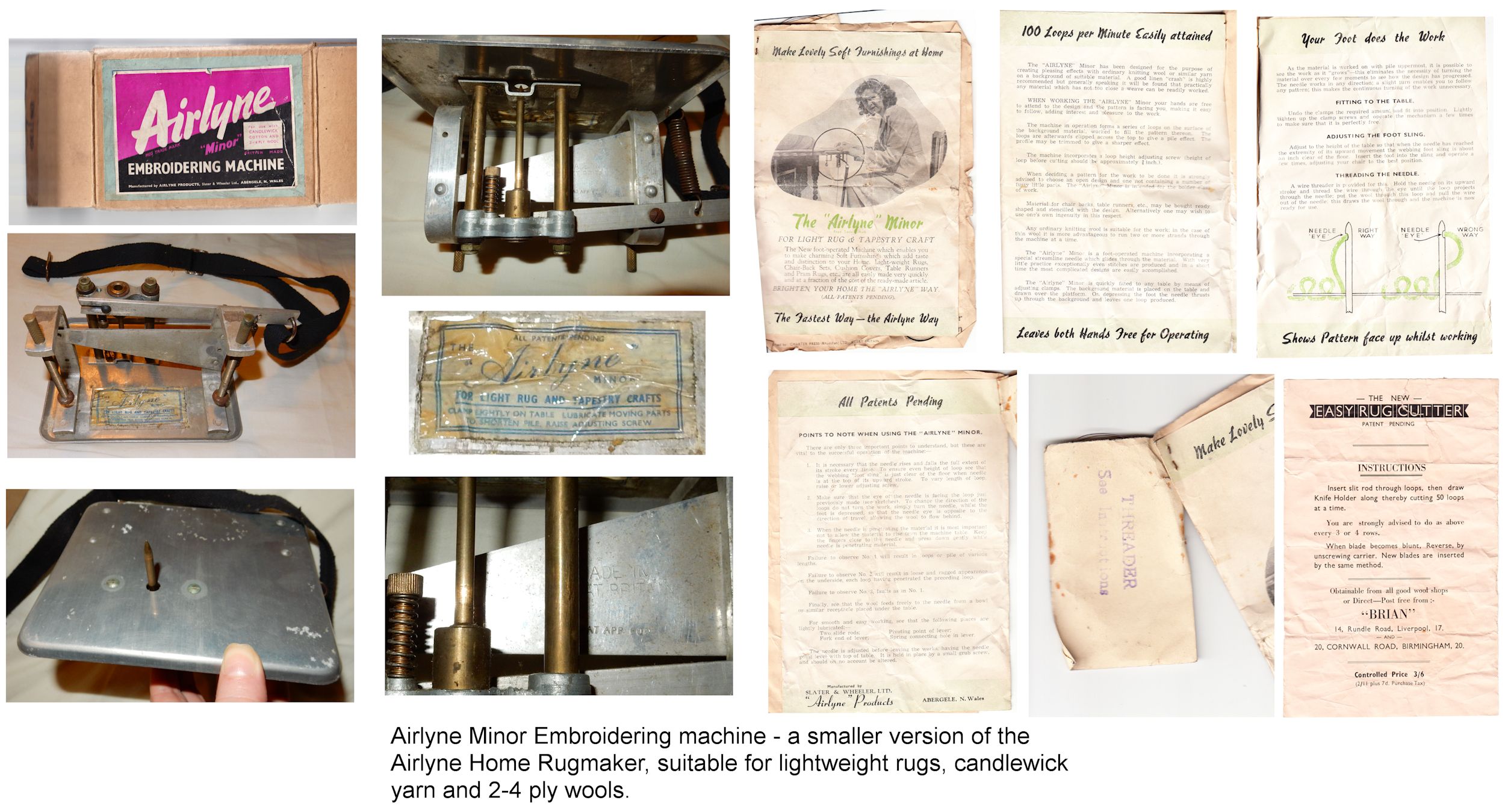
Slater and Wheeler (Airlyne)
Airlyne, of Abergele, Denbighshire, North Wales produced a punch needle machine to speed up rug-making. Although this engineering company was are not directly linked to latch-hooking, I was intrigued enough to look into the company's history. Very little of it relates to rug-making.
In 1912, a single car site and paint shop business was set up in Abergele on the former main road between Chester and Anglesey. In 1918 it was sold to Captain Slater. Harold Knowlson took over the company in 1923. Harold had been a dispatch rider during the 1st world war as part of the Territorial and Reserve Forces (Territorial Army) in France. After the war he returned to Abergele, Wales, and with his business partner, Mr Harry Budge, Knowlson bought "Slaters and Wheeler" garage from Captain Slater. Slaters has been run by the Knowlson family ever since. By 1929, Slaters garage were displaying and selling the latest cars from factories in Wolverhampton and Coventry and gained a reputation for expertise in quality cars and in servicing the cars. As demand grew, Harold's son Ken Knowlson expanded the showrooms, specialist parts departments and body paint shops. In 1953 Ken moved Slaters into a custom-built showroom. That was eventually outgrown and moved to Market Street.
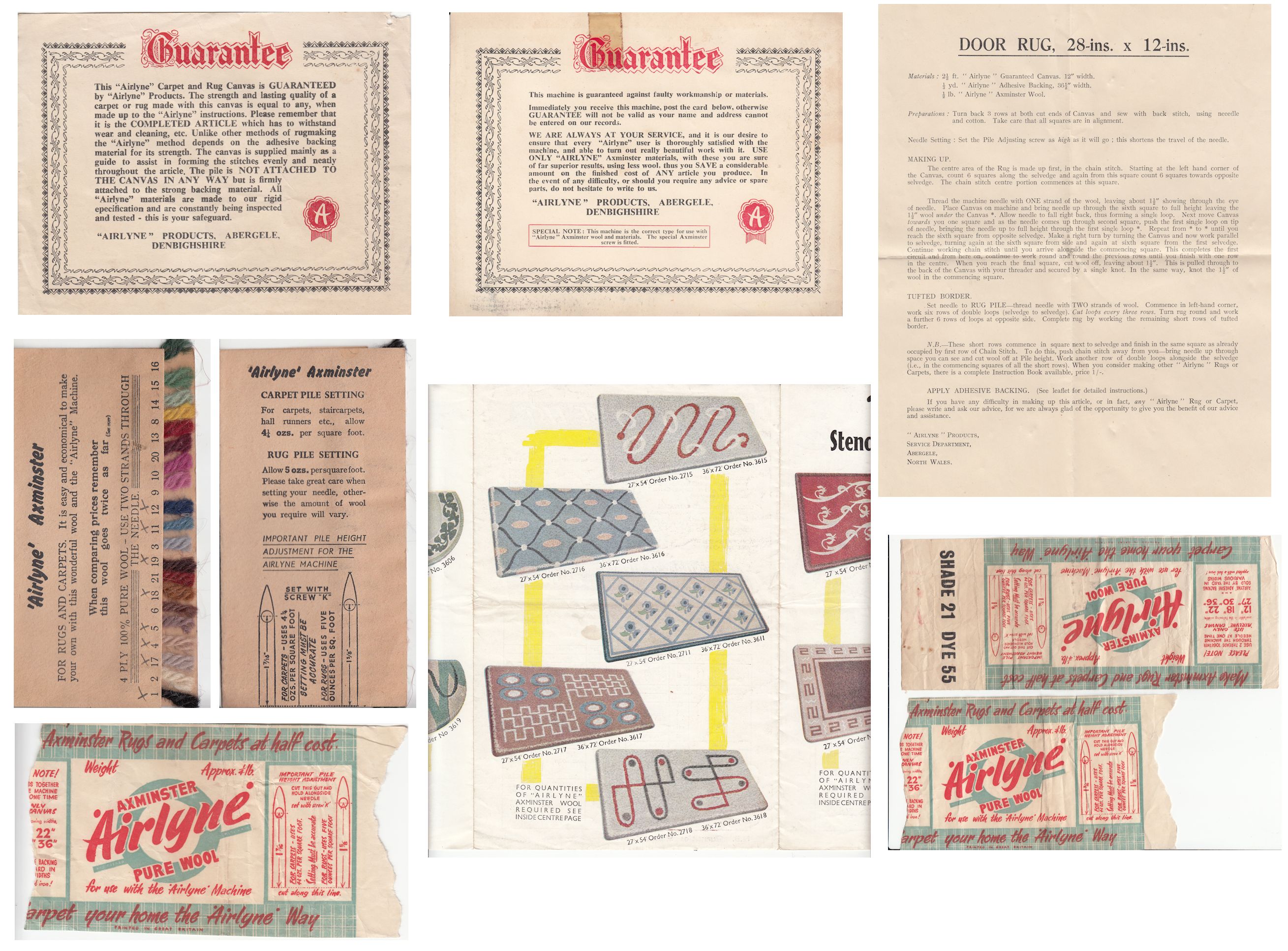
Airlyne Products was part of Slater & Wheeler (Airlyne) Ltd, incorporated on 12th December 1951. Slater and Wheeler Airlyne operated from the old Slaters Motors garage at the beginning of the World War II to make aircraft parts, while the motors division assembled jeeps and shell casings. William Edward Humphreys "Teddy" Jones ran the Airlyne Products machine shop and it was he who invented the home-rug making machine during the 1950s. The company diversified into household mechanical and electrical products after the war as they did electrical repairs (radios, and later televisions) from retail shops in Rhyl and Abergele. A fleet of vans provided a battery exchange round the farms for the radio sets. In the 1960s, Airlyne Products became part of textiles giant, Courtaulds. Slater & Wheeler (Airlyne) Ltd was finally dissolved in 1998, by which time their business had become the "letting of own property." Meanwhile, Slater & Wheeler Ltd, incorporated 1978, remains a car dealership (Slaters Vauxhall).
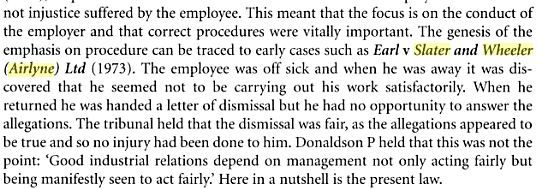
The Airlyne Home Rugmaker seems to have been refined as the Airlyne Auto-Cut. This incorporated scissor blades in place of a punch needle. Instead of threading the yarn through the shaft of a needle, yarn was threaded between a curved pair of blades. The blades were thick so that behind the sharpened edge they gripped the yarn like pincers. One scissor handle was attached where the needle formerly sat. The other scissor handle curved outwards and could move freely. As the blades were pushed through a slot (instead of a round hole) in the base-plate, the scissor handles were pressed together. The blade snipped the yarn, but the free end of the yarn (from the spool or skein) was still gripped. As the scissors retracted down through the slot they sprang open and left two cut ends behind. The operator moved the hessian, the wool slid through the loosened pincers and the action was repeated. The operator no longer had to cut the loops him/herself. It all looks very ingenious, but the relative rarity of the Auto-Cut version suggests it was less reliable. The blades would have needed sharpening and the scissor hinge would need regular oiling (it would also have been fouled by wool fibres) otherwise uncut yarn would be pulled back down by the pincers instead of making a tuft or a loop.
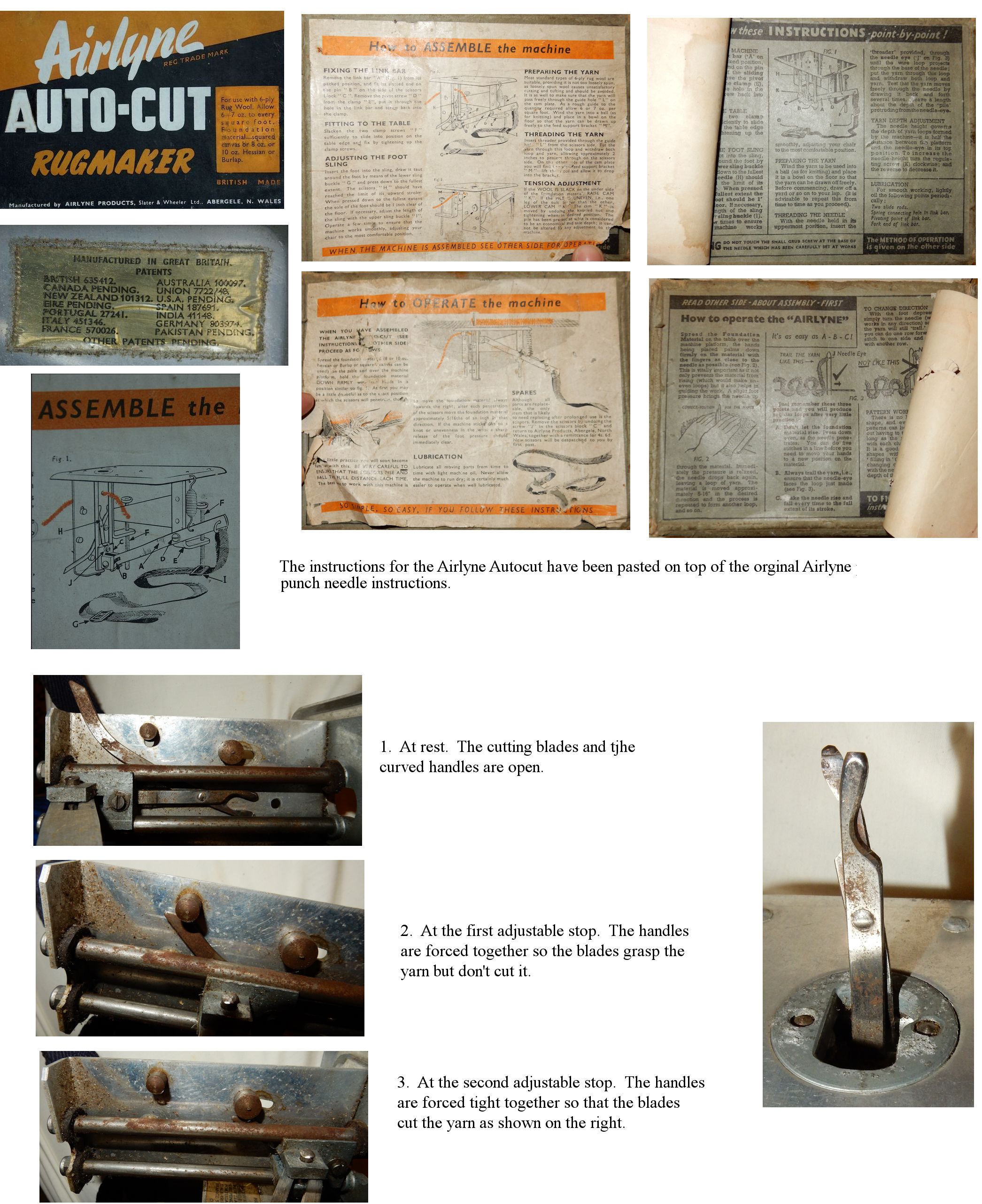
I located the original Airlyne Rugmaker patent GB635412 that contains a description and several diagrams of the machine. The Auto-Cut version patent is GB635412-A.
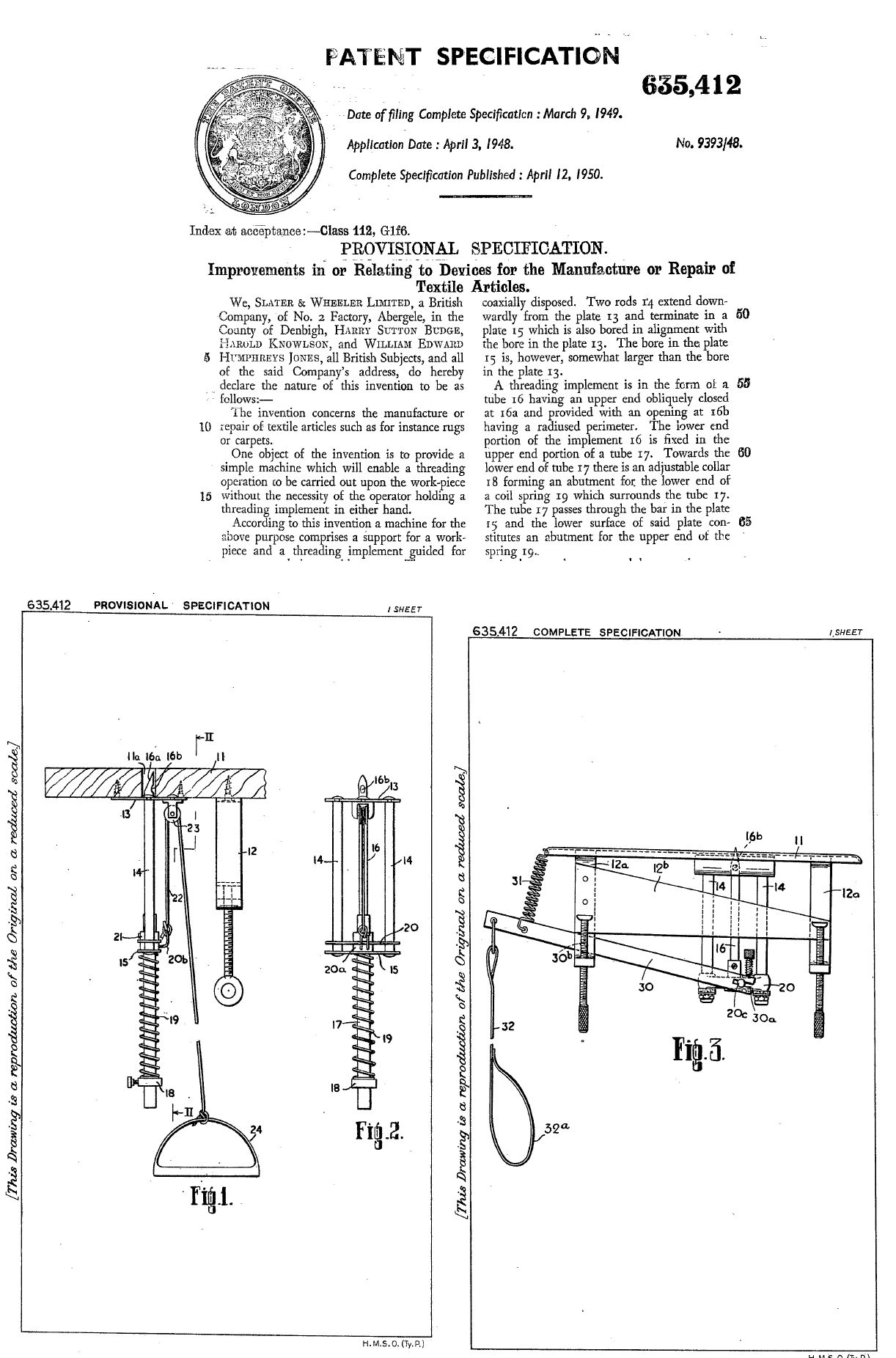
The list of former directors shows this to have been very much a family business spanning several generations. Harold Knowlson and Harry Budge were the first generation, acquiring the business in 1923. Geoffrey Sutton Budge, John Tomlinson Budge, Kenneth Albert Knowlson and Nanette Rosa Knowlson were the 2nd generation, born in in the early 1920s. They were succeeded by Richard George Budge and Edward John Budge, born in the early 1960s. The Knowlson generations are Then there are Patricia Ann Knowlson (b 1949) and Colin Robert Knowlson (b 1949), followed by Nigel Andrew Knowlson (b 1974) and Gareth John Knowlson (b 1977). Colin Knowlson has archived his familyís motor companyís historical artefacts, images and documents including photos of the interior of the Teddy Jones-run Slater and Wheeler machine shop which turned out military equipment during WWII.

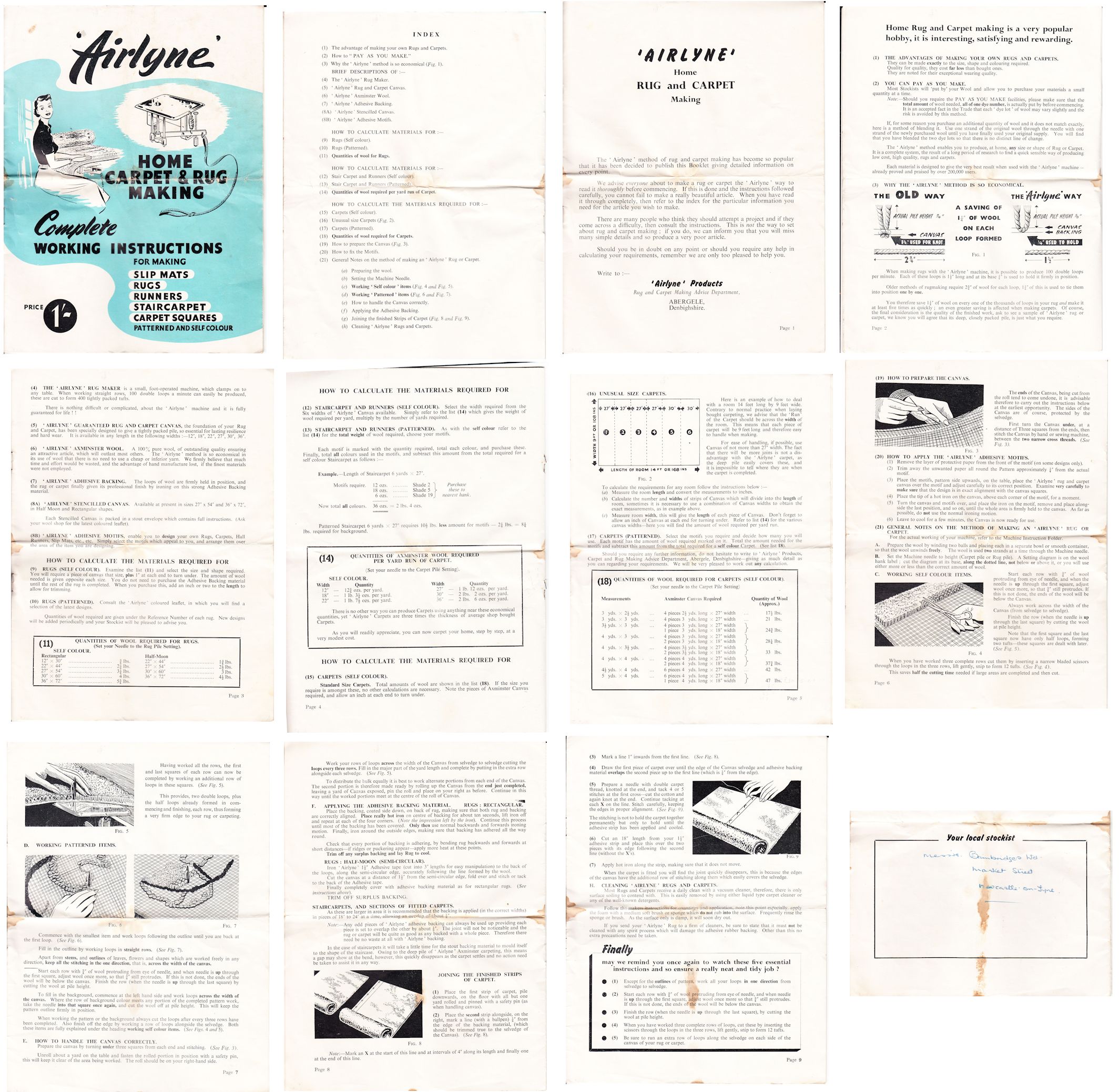
EMPISAL RUG MACHINE
The Empisal rug machine, made by Empisal Home Industry Schools in Johannesburg, South Africa, was a ruggedised (no pun intended) version of the Airlyne, made under licence. The mechanism is enclosed in a metal box, making it a sturdier version and better protected from dirt or dust. My machine is in almost pristine condition with a highly polished top-plate and barely a scratch on the enamel-painted metalwork.
